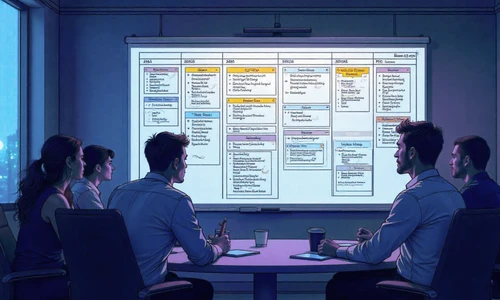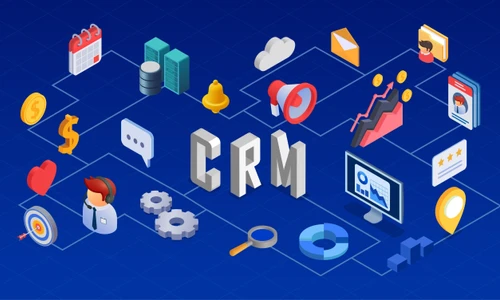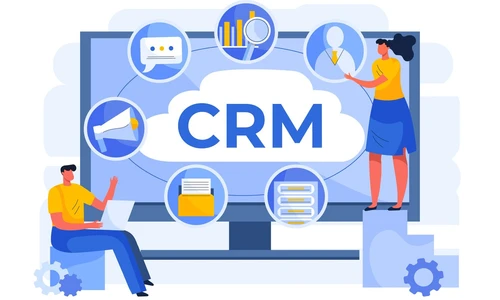

A guide to choosing and implementing the ideal CRM for your business
1. Definition of needs and objectives
The first step to successfully selecting a CRM system for your business is to carefully define your needs and goals. To be sure that a new CRM will be truly beneficial, you must first conduct an analysis of your existing processes. This will identify the areas that need improvement and help you determine the direction you want to take. Defining specific goals, such as increasing conversion rates or improving customer service, will give you a clear direction in your search for the right CRM.
Remember to think about the future and consider how your needs may evolve. This will lay a solid foundation for deploying your CRM system.
2. Involve relevant stakeholders
When choosing a CRM system in your company, all stakeholders should be included. From sales, marketing, to customer support and the IT department. This diverse point of view will ensure that the CRM meets different needs throughout the company. Collaboration between departments will allow for the integration of unique perspectives, a unified understanding of goals, and readiness for change. It will also minimize the risk of misalignment and support effective deployment of the new system.
3. Independent implementation vs. implementation with a CRM partner
The decision between stand-alone implementation and collaboration with a CRM partner is crucial for successful project implementation. Independent implementation offers control and customization of the system, but requires time and expertise. In contrast, partnering with a CRM partner means faster deployment and experienced support, but can be more costly. When making a decision, it is always important to consider what capabilities, resources and long-term plans your company has.
4. Evaluating different CRM options
Research the different CRM systems on the market and compare them according to the parameters that are key for you. In particular, focus on functionality, customizability, scalability, user-friendliness and support.
5. Create a short list of potential CRM solutions
After carefully evaluating the various CRM options, it's time to create a short list of potential solutions that best fit your specific requirements. This list should include the best candidates based on your criteria.
6. Demo and testing
Once you've narrowed down your choices, a good step is to ask your CRM partner for a demo or get a free trial. This step will give you the opportunity to test the systems in real-life operation and get valuable feedback from users. When testing, it's important to see if the CRM meets your company's needs and if it performs well in different work situations. Pay particular attention to whether the system is intuitive and easy to use for your co-workers. This is because user-friendliness is key to making the system easy to implement in all parts of the company.
7. Evaluate the costs and benefits
A key point is to evaluate the overall costs and benefits. In addition to the purchase price, it is important to consider the operating costs and additional fees for training, support and customization of the system. When evaluating costs, it is also crucial to consider the expected benefits and advantages that the CRM will bring to you.
So focus on improving efficiency, increasing employee productivity or improving overall customer service. Always consider the long-term effects and strategic benefits that the system can bring you.
8. Implementation and training
Once a specific CRM system has been selected, it is crucial to ensure a smooth implementation. This process involves several steps that must be carefully planned and executed. It is important to define a detailed plan that includes a timeline, responsibilities and key milestones.
Another important step is to smoothly migrate existing data into the new system. At the same time, don't forget to continually test to make sure everything is working as it should. Regardless of how advanced a system you choose, it's crucial to ensure your employees receive adequate training so they can adapt quickly.
9. Ongoing evaluation
It's only after the CRM system is put into practice that the real ride begins. It's important to periodically review how the new system is performing and if it's meeting your expectations. At this stage , don't forget to regularly evaluate its performance and effectiveness and monitor whether the CRM is meeting your goals.
10. Continuous development and adaptation
One of the invaluable characteristics of a successful CRM is its ability to change and grow with your business. A system that works today should be ready for what tomorrow brings. This includes not only technological developments, but also changes in your business. It's important to remember that CRM will not only be a part of how you work today, but also a tool for future success.
Remember that CRM selection and implementation is not just a technical process, but also a STRATEGIC STEP that can greatly impact your business. Careful selection, regular evaluation and customization can help you achieve optimal results and strengthen customer relationships.
You Might Be Interested In


ClickUp vs. Freelo: Comparing Project Management Tools

Project Management Methodologies: Overview, Key Differences, and How to Choose the Right One

How to Choose the Best Project Management Tool: A Guide for Businesses

Získáním leadů vše teprve začíná
Interested in a custom solution?
We’ll get in touch with you, review your processes, and show you how successful companies do things. If you're interested, we'll guide you through the next steps and help you with the entire process of your digital transformation.

































